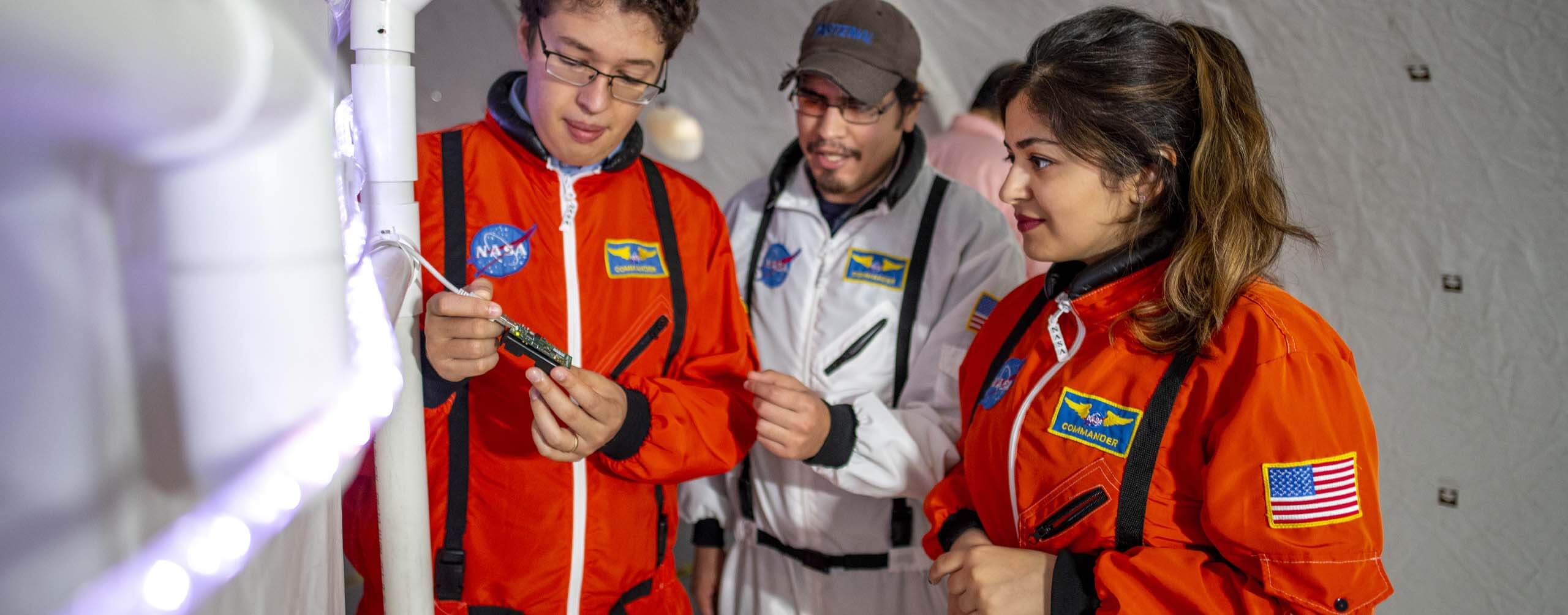
Engineering Physics
Maine College of Engineering and Computing
Engineering is about the way things work. Physics is about why things work the way they do. By combining the two, engineering physics students are able to satisfy their curiosity and ultimately gain a deeper understanding of the engineering problems they are working to solve.
One of the hallmarks of an engineering physics degree is the level of flexibility it affords. UMaine prepares its engineering physics graduates for a diverse array of careers. You can work as an engineer, a physicist or pursue a graduate degree.
UMaine engineering physics students are able to take advantage of a myriad of research opportunities as undergraduates — some as early as their freshman year. Many work closely with scientists in UMaine’s Laboratory for Surface Science and Technology, which is internationally known for cutting-edge research with sensors.
UMaine engineering physics was the first accredited engineering physics program in the world. Currently, it is one of only 20 programs in the U.S. and the only accredited one in New England. The Department of Physics and Astronomy in conjunction with the College of Engineering offers bachelor’s and master’s degrees in engineering physics. The curriculum emphasizes the science and mathematics behind engineering practices.
Faculty and staff are focused on student success. Three engineering physics professors have received UMaine awards for research and creativity in recent years, another is a winner of the international Humboldt Research Award, and the department is home to recipients of the Distinguished Maine Professor Award.
Majors are encouraged to participate in the Society of Physics Students, the Society of Women Engineers and other organizations in their chosen engineering field. In addition, majors frequently qualify for membership in the national honor societies Sigma Pi Sigma and Tau Beta Pi.
Our students have recently had internships at an optics laboratory in France, an astronomical observatory in Chile, the Jet Propulsion Laboratory in California, and NASA Marshall Space Center in Alabama.
Our alumni have great success in some of the country’s elite graduate programs, but they also excel in industry. Charles Peddle ’59 was the main engineer of the microprocessor used in the Apple, Commodore, Nintendo and Atari computers. Other UMaine graduates have gone on to become the CEO of Eastman Kodak Co., work as acoustical engineers for Disney, work for the CIA, thrive in the financial sector, work in nuclear engineering at Seabrook Nuclear Power Plant, manage the power flow for northern New England, work as radiation physicists at medical centers, and become high-level executives at SanDisk and Avis.
John Thompson
Professor, Department Chair
Bennett Hall, Room 120
207.581.1039 | umphysicschair@maine.edu
Engineering Physics
Maine College of Engineering and Computing
Bennett Hall
207.581.1039
